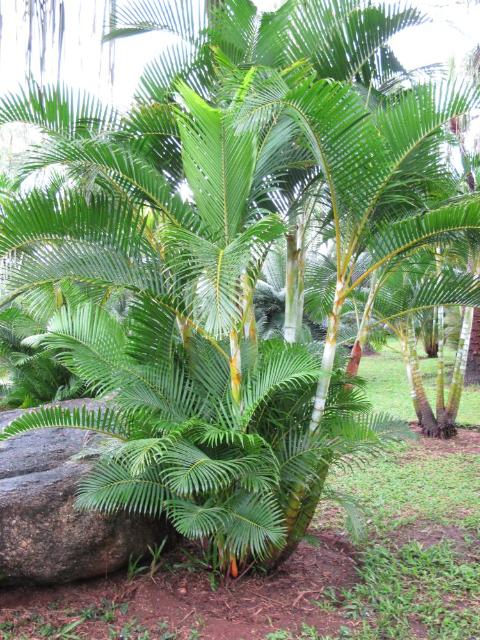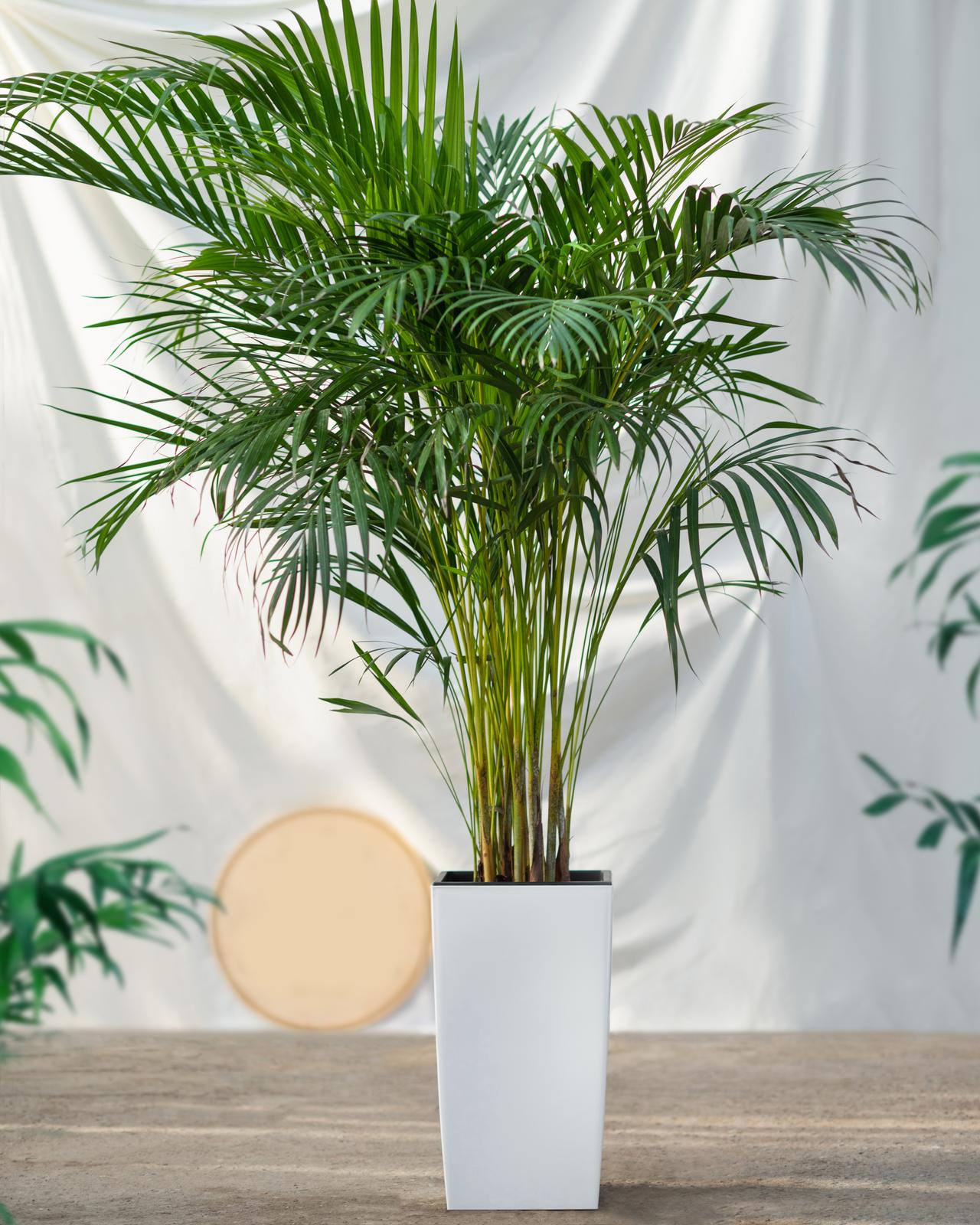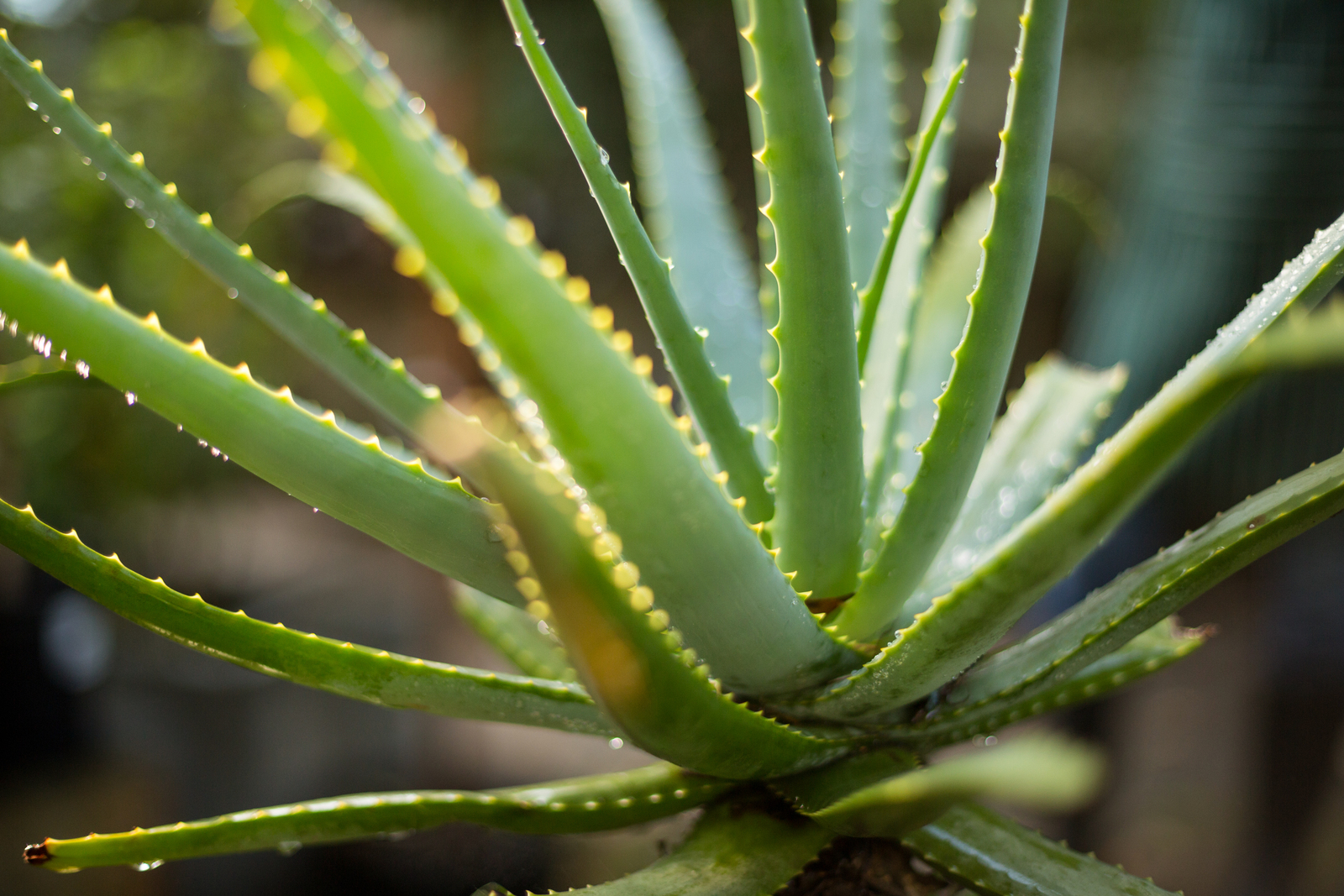Areca Palm Tree: Elegant Feathery Fronds
Areca palm trees (Chrysalidocarpus Lutescens) are native to Madagascar, and are known for their elegant feathery fronds. These popular cane palms are easy to grow and adapt to a variety of environments (full sun to light shade).
Areca palms add texture and elegant beauty indoors as an exotic house plant, as well as outdoors in the garden or landscape.

A cultivar of Dypsis lutescens growing outside at a botanical garden in Thailand. Credit: Scott Zona, CC BY 4.0
Chrysalidocarpus lutescens (Yellow Butterfly Palm, Golden Cane Palm, and Golden Feather Palm) belongs to the Arecaceae family, and can be planted year round in USDA hardiness zones 10 through 11.
If you live in a cool climate, this palm tree can be displayed outdoors in a container during the warm months, and then brought indoors during the winter.
Areca palms can grow up to thirty feet tall outdoors (when planted in the ground), with a spread of eight to ten feet. When grown indoors, height is typically six to seven feet tall. Feather-like fronds fan out from four to six inch wide bamboo-like trunks that grow in clumps.
The feathery palm fronds are green to greenish-yellow in color. The evergreen leaflets can reach 18 to 36 inches in length. These palm trees can be grown indoors as house plants, planted outdoors as a tropical accent, or used to screen off an area in the garden or landscape.
Areca Palm Tree Care - Indoors
Areca palm trees are the perfect indoor palm to accent an entryway, or display in an elegant room of the house. They are easy to grow indoors, and adapt to a variety of environments.

Tips for Houseplant Care
Lighting - Choose a location that receives bright, indirect light. Direct sun can cause leaves to burn.
Temperature – The ideal daytime temperature ranges from 65°-75° F. Evening temperature should not fall below 55° F. Keep palm away from hot or cold drafts.
Humidity – Areca palm trees love high humidity. To provide adequate humidity, spray palms with water on a daily basis, place plant container on a saucer filled with pebbles and water (water should be just below the pebble level), or run a humidifier in the room where your palm tree is located.
Soil & Fertilizer – You can use a regular potting soil with coarse sand or peat added into the mix. During growing period, fertilize every three months with a liquid fertilizer diluted to ½ strength and mixed into water.
Watering – Areca palms require heavy watering. Keep soil moist (not soaked – overwatering can cause root rot). The best time to water this plant is when soil becomes dry to a depth of one inch from the surface.
Note: This plant requires minimal pruning. Only remove dead fronds/branches and unwanted shoots that grow at the base of the plant.
Tips for Propagating and Potting
Areca palm trees are propagated from seeds or by root division. Small shoots will form at the base of the plant and can be separated by division at the root.
- Separate shoots (form at the base of the plant) from the root ball into smaller sections. If repotting, gently remove the plant from the container. Loosen the roots if they seem tight.
- Choose a container at least twice the size of the root ball. The container should allow enough room for roots to grow, as well as provide adequate drainage for water to run out of the bottom of the planter.
- Fill the pot with several inches of well-draining potting soil. If you’d like, you can use two parts packaged potting soil, two parts peat moss, and one part perlite.
- Place the separated shoot in the center of the container. Hold the plant upright as you add soil around the plant. Gently press the soil around the edges of the shoot.
- Water the plant so that the water runs out of the drainage hole.
Areca Palm Care - Outdoors
Areca palms thrive in tropical climates, and can be planted year round in hardiness zones 10-11. They can be planted outdoors in a container or above-ground planter, as well as in the garden or landscape.
Planting Tips and Outdoor Care
- Be sure you choose a location that receives bright indirect sunlight.
- Allow 4 to 6 feet between plantings.
- Feed every four months with a high quality palm tree fertilizer.
- Keep soil evenly moist.
- Do not plant this palm in a dry location. Areca palms like humid environments.
- Palm fronds turn yellow if soil becomes too dry. The leaves do not recover (revert back to a green color). It is best to remove these fronds, and water the plant regularly moving forward.
- Home
- Palm Tree Species
- Areca Palm Tree




